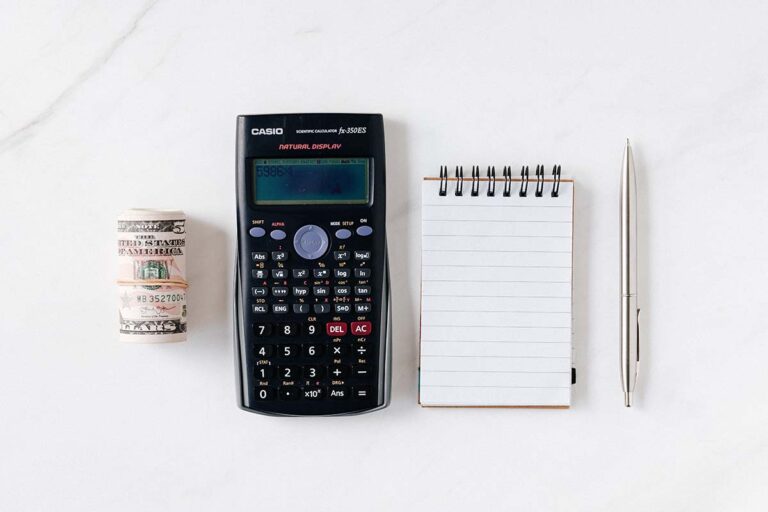Developing a personal budget is important for managing your money. The envelope based budgeting system is a cash based budgeting method that may help people learn to spend more thoughtfully and on purpose. It entails putting money into various envelopes that stand in for various spending categories. Applications for mobile budgeting can also be created using this technique. You can decide if the envelope budgeting system is the best one for you by knowing how it functions, as well as its benefits and drawbacks.
In a Nutshell
- The envelope system is a cash based financial planning technique.
- It entails putting money into various envelopes that stand in for various spending categories.
- It enables a thorough look at monthly spending, promotes the practice of keeping track of expenses, and aids in cost cutting.
- It can take longer and be more difficult than other approaches, and it is simple to overlook an expense.
- Your objective is to keep your monthly expenses under control by limiting your spending to the funds included in each envelope.
- It can be combined with other budgeting techniques, such zero based budgeting.
- Estimating monthly income and expenses is the first step in creating an envelope budget.
Understanding Envelope Budgeting
A personal budget is a system for recording income and expenses. According to a 2021 Debt.com survey, approximately 80% of Americans say they keep a budget every month, and 88% say everyone should budget regularly. There are different ways to budget, including zero based budgeting and annual budgeting.
“A budget is telling your money where to go instead of wondering where it went.”
Dave Ramsey
The envelope budgeting system uses a cash based approach to help people who have difficulty sticking to a budget become more aware and deliberate about their spending. You start with several envelopes, each representing a different budget category. Each is assigned an amount of money based on how much you expect to spend in that category during the month. Once the envelope is emptied of cash, you cannot spend any more money in that category until the new budget period begins.
Cash envelope budgeting can be adapted for use with mobile budgeting applications that allow the creation of digital envelopes for tracking debit card spending.
How Does the Envelope Budgeting System Work?
The envelope budgeting system is not complicated. However, there are some specific steps to follow to get it up and running.
Step 1: Add up Monthly Income
Before you begin using the envelope budgeting method, you should know your monthly income. This includes all the money you expect to bring in during the month. Your sources of income can be:
- Payrolls from a nine to five job
- Earnings from a part time job or a second job
- Earnings from an extra job
- Investment income
- Alimony or child support payments, if applicable
- Government benefits, if applicable
- Stimulus payments or tax credit advance payments
You can also include any one time sources of income you expect to receive during the month, such as tax refunds or rebates.
If your self employment income is irregular, you can establish a baseline average income by adding your total income for the previous year and dividing that amount by 12.
Step 2: Establish Budget Categories
The next step is to choose the categories to be included in the budget. These can be:
- Food
- Fuel and oil
- Clothing
- Dining out
- Entertainment
- Personal care
- Pet care
- Household items
- Gifts
Housing, utilities, insurance and debt repayment expenses are not usually included in the envelope budget because they represent the fixed part of your budget expenses that don’t change much or at all from month to month. You can pay these bills electronically by ACH (Automated Clearing House) transfer, with your credit or debit card, or by writing a paper check. Your cash envelopes should represent the categories in which your spending changes each month.
Reviewing your bank statements for the last three to six months can give you an idea of which categories you tend to spend more or less on, and when.
Step 3: Allocate Budget Amounts to Each Endowment
Once you have determined your income and chosen your budget categories, you will need to decide how much money to allocate to each category. For example, let’s say you have $1,500 to budget for each month’s out of pocket expenses. Here’s an example of a budget with envelopes, based on average consumer spending in 2023:
- Food – $462
- Fuel and oil – $171
- Clothing – $130
- Eating out – $248
- Entertainment – $143
- Personal care – $84
- Miscellaneous – $96
Your total expenditure would be $1,214. You would have $286 left over that you could put into cash envelopes. You could allocate some of that money to a pet care envelope, some to an envelope for child related expenses if you have children, and the rest to gifts or charity.
Step 4: Spend the Money from each Envelope
Once you have allocated money to each envelope, put your budget into practice by spending it to cover expenses. Each time you take money out of the envelope, subtract it from the total. For example, if you start with $100 in the gas envelope and pay $25 at the pump, write it on the back of the envelope. This will allow you to keep track of how much you have left to spend on each envelope.
The key to making the envelope budgeting system work is to spend only the money you have on hand. Let’s say you have $462 allocated to your envelope for groceries. If that’s the entire amount of your budget for the month, then you could spend about $106 per week ($462 × 12 months ÷ 52 weeks). Once you run out of that money, you won’t be able to spend any more until the new budget month starts.
You could take money from another envelope, but that could leave you with a deficit in another budget category. That’s why using the envelope budgeting system requires some discipline to avoid overspending.
If you have money left over in your cash envelopes at the end of the month, you can add it to a high yield savings account or use it to make an extra payment on debt.
Advantages and Disadvantages of Envelope Budgeting
Understanding what’s good and potentially not so good about envelope budgeting can help you decide if it’s right for you.
- Allows a granular view of monthly spending, avoiding overspending
- Encourages the habit of controlling expenses
- Helps to save
- Allows a detailed view of monthly spending, avoiding excessive expenses.
- Encourages the habit of controlling expenditureHelps save money
- Takes longer and is more tedious than other methods
- It can be easy to forget an expense
- It is not as convenient or secure as using a debit or credit card for certain purchases
- More time consuming and tedious than other methods
- It can be easy to forget an expense
- It is not as convenient or secure as using a debit or credit card for certain purchases.
When deciding whether to do envelope budgeting, consider your current spending habits. If you are already disciplined about controlling your spending, you may not find the switch to envelopes too difficult. Also consider what you tend to spend the most on and whether it makes sense to pay cash instead of using a debit or credit card.
For example, you may pay cash when you dine out. However, if you were to use a rewards credit card for dining out, you could earn points or cash for that spending, which could save you money, assuming you pay off the balance in full each month to avoid interest.
Wrap Up
The envelope budgeting system is a cash oriented way of thinking about budgets, although you can use virtual envelopes instead of real ones. It makes budgeting and visualizing how you spend money very tangible, but it can also be tedious. And if you use real money, you can lose the rewards and security of using a credit or debit card.
However, compared to other ways, it might be more time consuming and difficult, and it can be simple to overlook an expense. You can decide if the envelope budgeting system is the best one for you by knowing how it functions, as well as its benefits and drawbacks.
FAQs

The envelope budgeting system consists of assigning expenditure categories to individual envelopes. Each is assigned a certain amount of money, which is used to cover the expenses of that category.
First, choose the spending category for which the envelope will be used, and then decide how much money you will put in it. Write the initial cash total on the outside and subtract the amount of each purchase to keep track of how much you have left for the month.
There is no set amount to allocate. Rather, you should choose a dollar amount that reflects what you typically spend in that category each month. Thus, if you spend $100 a week on food, the envelope should be between $400 and $450.
A set sum of money is allotted to each category of spending in the envelope budgeting technique. The cash for each category can be kept in real or digital envelopes. You take the necessary amount of money from the correct envelope when you need to make a purchase. This enables you to stick to your spending plan and prevents overspending.
The envelope budgeting method enables you to prevent going overboard with your spending. Additionally, it enables you to visualize your spending and ensure that you distribute funds to the appropriate categories. Additionally, it can enable you to save money by preventing you from going over the budget for each envelope.
The time commitment required to manage the envelope budgeting approach is its biggest disadvantage. Additionally, if you utilize actual envelopes to keep track of your costs, it may be challenging.
Article sources
At Capital Maniacs, we are committed to providing accurate and reliable information on a wide range of financial topics. In order to achieve this, we rely on the use of primary sources and corroborated secondary sources to support the content of our articles.
Primary sources, such as financial statements and government reports, provide firsthand evidence of financial events and trends. By using primary sources, we are able to directly reference information provided by the organizations and individuals involved in these events.
Secondary sources, such as financial analysis and commentary, interpret and analyze primary sources. While these sources can be useful for providing context and background information, it is important to use corroborated sources in order to ensure the accuracy and reliability of the information we present.
We take pride in properly citing all of our sources, both primary and secondary, in order to give credit to the original authors and to allow our readers to verify the information for themselves. We appreciate your trust in our website and are committed to upholding the highest standards of financial journalism.
- The Balance – How to Use the Envelope Budgeting Method
- Debt.com – Americans Are Budgeting More Than Ever
- U.S. Department of Labor, Bureau of Labor Statistics – Consumer Expenditures — 2020




















